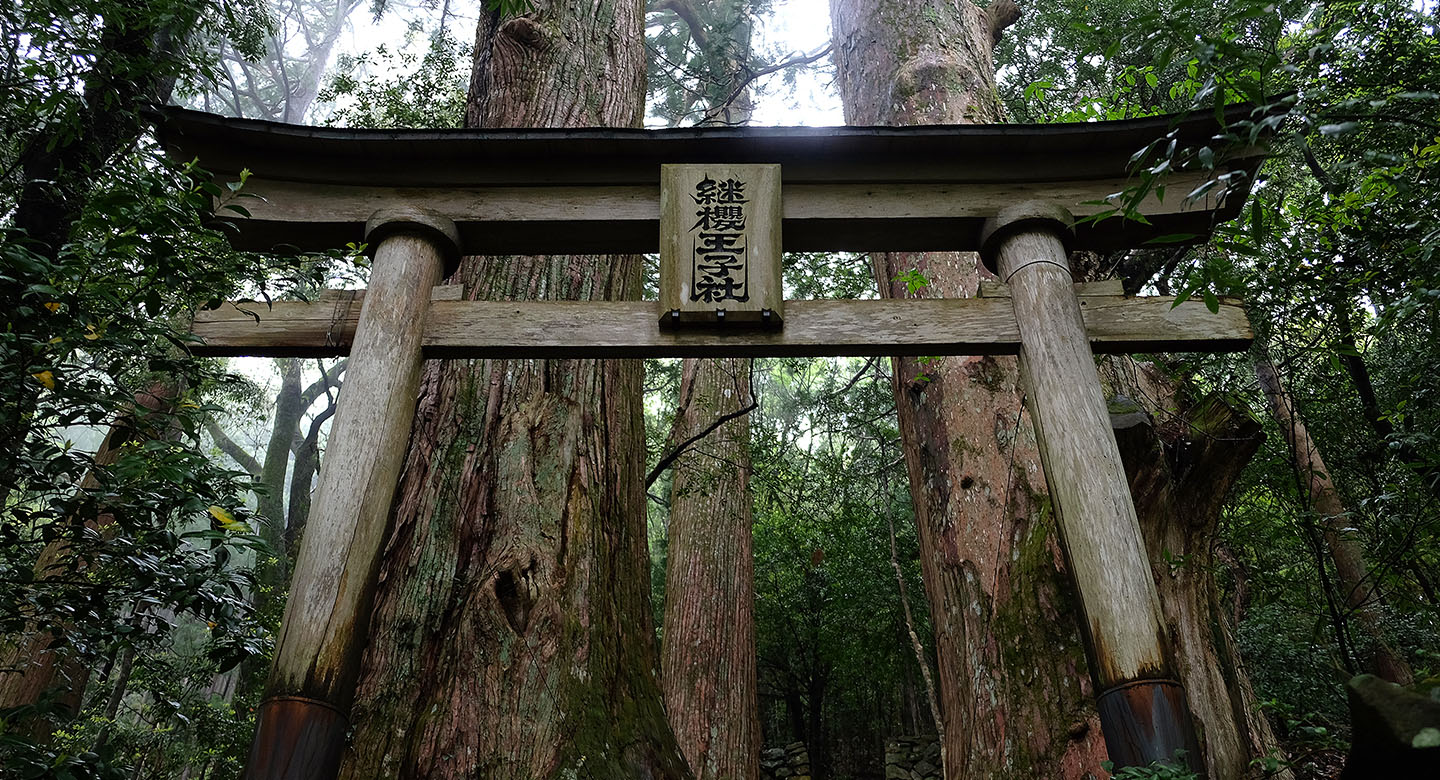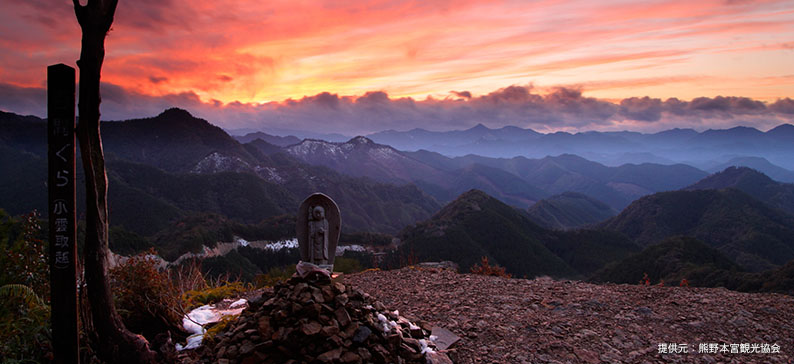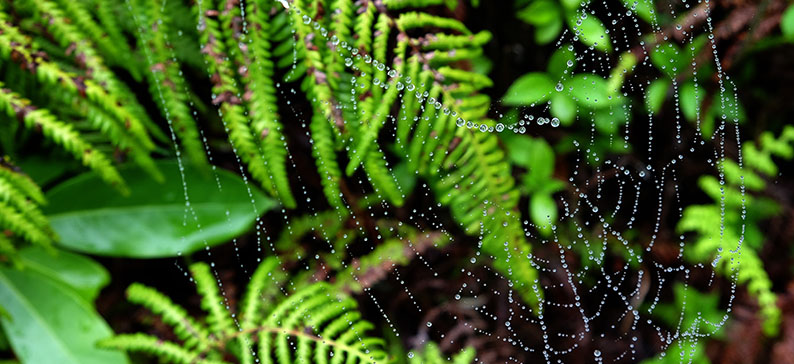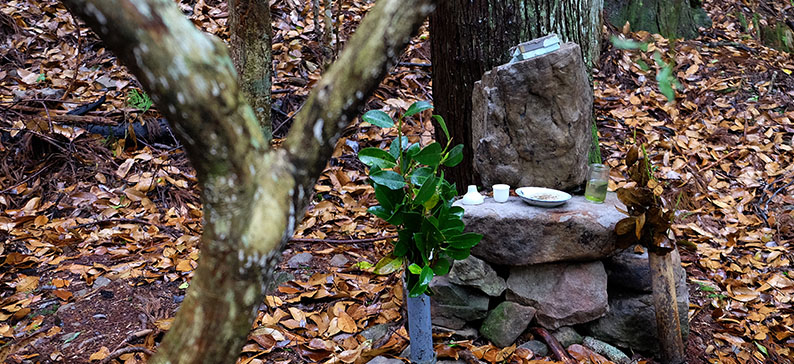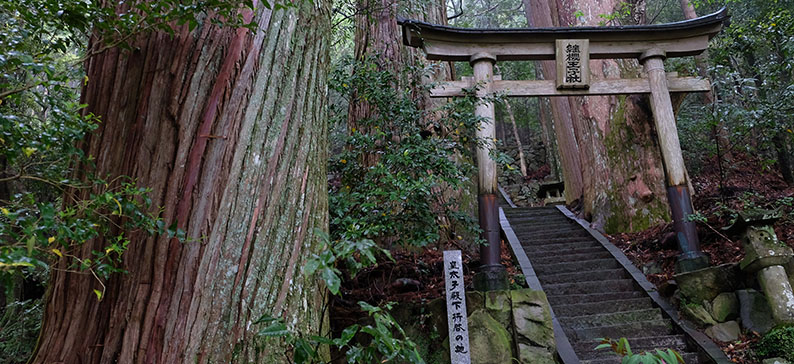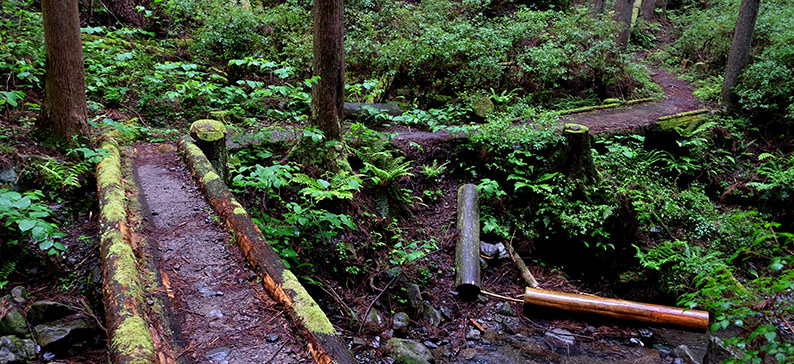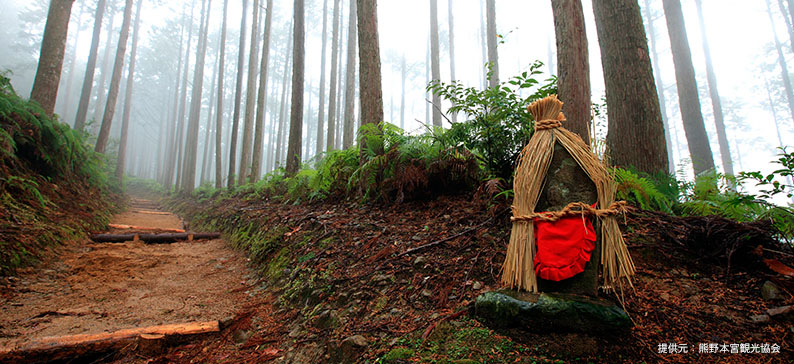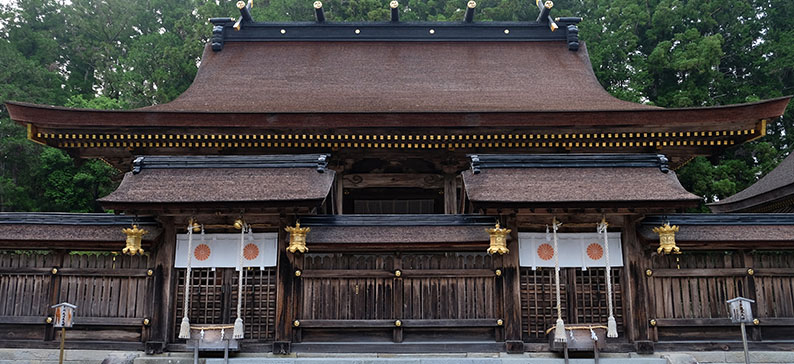Kumano Kodo
Far beyond what I expected both in terms of fatigue and beauty, walking the Kumano Kodo was not only a journey in distance, but one that took me somewhere I'd never been – to a place of inner peace.
KUMANO
Walking the Kumano Kodo Pilgrimage Trail
“Those who walk the Kumano Kodo will be granted special powers.”
Say what?
My host’s words only serve to heighten my sense of excitement for the next two days.
With my pack on my back, I cross the bridge that takes me to a starting point on the Kumano Kodo Pilgrimage Trail. The magical aquamarine of the river rushing below reminds me I should’ve asked what powers to expect. Astral projection? Precognition? Superhuman longevity?
But let’s be honest, I’m not here to prove anything, which is why I’ve chosen the Nakahechi trail, supposedly the least challenging of the many trails that thread through the Kii Mountain Range, recognized as a UNESCO World Heritage Site for its sacred grounds and pilgrimage routes. The region was also an intersection for Japan’s two major religions: Shinto, rooted in nature-worship since prehistoric times, and Buddhism, which brought ascetics seeking secluded grounds for training.
Much like the Islamic Hajj to Mecca or the Santiago de Compostela in Spain, the Kumano Kodo is a 1,000-year-old network of arduous mountain trails that lead to the three Kumano Grand Shrines of Hongu, Nachi and Hayatama. Unlike the shogun warriors praying for victory or the merchants asking for prosperity, I’ll retrace the steps of ordinary pilgrims who sought good health, happiness and safety. Oh, and some special powers.
I offer a five-yen coin from my collection (they’re considered lucky) at Takijiri Oji, a charming little shrine made entirely of wood. Oji are like satellites of the Grand Shrines, built in the 12th and 13th centuries to protect and guide pilgrims on their journey.
My own 38-kilometer journey begins with a path going behind the shrine and around a huge boulder that’s fused with an old tree. Right away, I’m confronted with a frighteningly steep slope. Inching my way up, I try not to think about the 37.9 kilometers to go. And I thought this was going to be easy…
As I catch my breath after the abrupt ascent, I notice that the trail leads into… am I hallucinating?…a dark cave. I step in, and see a narrow passage leading up to a small hole at the top. A hole so small, I have to shove my backpack through first so I can squeeze myself through and wriggle my way out. Quite the welcome, Kumano.
Consulting my guidebook, I realize that I’ve just negotiated the Tainai Kuguri, which literally translates to “passage through the womb.” It’s supposed to be a test of faith. More like a test of luggage and body size, I’d say.
The trail continues onwards and upwards. Upwards over tree roots and through tree tunnels, onwards over cobble stone paths and alongside red-bib-adorned jizo statues protecting travelers. It weaves through quaint villages and bamboo forests, at times giving way to fantastic vistas of nearby peaks and rice terraces.
At the base of Takahara Kumano Shrine, I’m greeted by a majestic old tree. As I make my way to the shrine entrance, I notice many others like it. I wonder just how tall (and wide) these giants are, and how long they’ve been protecting this land. I’m surprised by the cheerful colors and intricate geometric designs of the main building, which dates back to the 16th century and is considered to be the oldest structure along the Nakahechi route.
The trail continues through a succession of towering cedar forests, and takes me slaloming between trees. I run my fingers over velvety moss, spiraling fern tips and fresh dewdrops resting on star-shaped leaves. I cross pristine creeks on log bridges and offer my lucky coins at countless oji ruins.
It starts to rain, and the cobble stone paths suddenly become lethal. I have to tread carefully, even with my heavy-duty hiking boots, especially when walking downhill. I can’t fathom how centuries ago, pilgrims walked these same trails in straw sandals. Their sandals only lasted half a day, so they’d have to buy new ones from villagers along the way. And on top of that, they did what I’m doing now…in kimono. Let’s just say I’m glad for my Gore-Tex and grippy rubber soles.
Day Two starts with Nonakano Kiyomizu, one of the most exquisite water sources in Japan. I wash my hands and face, unknowingly purifying myself for the next stop, which becomes my all-time favorite place in Japan: Tsugizakura Oji. A steep, forested hill with monumental cedars spiraling towards the heavens, protected by a tiny, solemn shrine at the peak that’s interposed between a pair of fierce-looking komainu guardian dog statues. I have the place to myself. Oh, and a few ancient tree spirits, 1,000 years of history, and maybe the resident deity I call down with a lucky five-yen coin.
It’s breathtaking. I’m alone, but feel at one with the universe. This oji embodies that unity – the colossal tree trunks are part of the torii gate, their branches an extension of the shrine. I’m intoxicated with Kumano magic.
My senses are heightened. As I continue on the trail, I hear the heartbeat of the forest, raindrops falling on leaves, and my own gentle footsteps on the forest floor. Everything becomes vivid with the rain. I’m surrounded by infinite shades of green. Dewy spider webs transform into beaded lattices.
Like the fog gradually lifting over distant peaks, the forest slowly starts to tell its tale. Legends of wolves nursing newborn babies, of treetops with three moons, of women transforming into serpents to avenge deceitful monks. I don’t catch the story about the abandoned settlement, or the old aqueduct, but continue to hear the murmurs of the forest.
As I sing along with a nightingale that’s high on life, I arrive at a village buzzing with the excitement of its first tea harvest. Rows of leaves are laid out to dry on straw tatami mats. I breathe in their crisp, fresh scent and stop at an unmanned stall for a cold lemonade. At the edge of the village, women chat as they rub tealeaves by hand and roast them over a fire. As I wave goodbye, I’m treated to a panorama of perfectly aligned rows of tea bushes descending into the valley.
Back in the forest, I realize that I’ve been walking for hours on end in the rain, with a heavy pack on my back. I’m amazed by my feet and how they just keep going despite the fatigue. But there’s poetry everywhere. And when you’re surrounded by this much poetry, it’s easy to forget about tired feet.
I take a detour to a lookout, where a space through the branches gives way to a view of the world’s largest torii, belonging to the Kumano Hongu Grand Shrine, my final destination. Surprisingly, I feel a tinge of disappointment that my walk is nearly over. I’m so energized, I could go on for another week!
I arrive at Kumano Hongu Grand Shrine through the wooden torii at the back entrance. The gold accents on the roof of the main building glint in the last of light of the day. I hear the echo of the taiko drums and the priests’ prayers in the distance. I’m overcome with emotion as I offer my final five- yen coin to the esteemed deities of Hongu. My arrival here marks the end of my pilgrimage. A pilgrimage that granted me the power of being at peace with myself.
By Maho Harada
January 26, 2017
Kumano Kodo information
Address
- TOPCOLUMNKumano Kodo
- TOPDESTINATIONSKUMANOKumano Kodo
